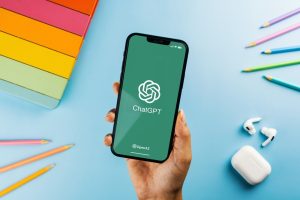 As an ever-evolving field, education constantly seeks innovative methods to engage students and enhance learning experiences. With the advent of AI tools like ChatGPT, teachers now have a unique opportunity to introduce new topics in a more interactive and captivating way. This article explores the top 10 ChatGPT prompts that teachers can use to spark curiosity and foster learning in various subjects.
As an ever-evolving field, education constantly seeks innovative methods to engage students and enhance learning experiences. With the advent of AI tools like ChatGPT, teachers now have a unique opportunity to introduce new topics in a more interactive and captivating way. This article explores the top 10 ChatGPT prompts that teachers can use to spark curiosity and foster learning in various subjects.
How can you use ChatGPT as a teacher?
ChatGPT is an AI-driven language model that offers a versatile tool for teachers. It can generate creative prompts, simulate discussions, and even provide tailored explanations, making it an excellent resource for introducing new topics.
As you refine the general prompts in this blog post, consider the following:
- Tone: try adding an adjective like friendly or professional to your prompt to make the response have a particular tone
- Context: if you are creating something for students, families, or colleagues, include that in your prompt so the audience is clear
- Specificity: if the first response you get feels too general, follow it up with a condition that makes it more specific, such as "in shorter sentences" or "with simpler vocabulary."
Here are 10 prompts to help you brainstorm ways to use ChatGPT to enhance your workflow during the school year.
Prompt 1: Kickstarting a History Lesson
"Imagine you're a soldier in the American Revolution. Describe a day in your life." This prompt helps students step into the shoes of historical figures, making history lessons more relatable and vivid.
Prompt 2: Exploring Scientific Concepts
"Explain the process of photosynthesis as if you're a leaf on a tree." Such prompts encourage students to understand scientific concepts from a first-person perspective, deepening their comprehension.
Prompt 3: Creative Writing Inspiration
"Write a short story where the main character discovers a hidden world beneath their city." Prompts stimulate creativity and can be linked to broader literature and social studies themes.
Prompt 4: Engaging in Math Challenges
"How would you use algebra to plan a party with a limited budget?" Applying math in real-life scenarios helps students see the practical application of abstract concepts.
Prompt 5: Discussing Current Events
"What are the implications of recent space exploration missions?" Discussing current events through prompts allows students to connect classroom learning with real-world developments.
Prompt 6: Delving into Literature
"Create a dialogue between Romeo and Juliet if they lived in the 21st century." This prompt helps bridge classical literature with modern contexts, making it more engaging for students.
Prompt 7: Understanding Social Studies
"Design a campaign for a presidential candidate in the year 2050." Such prompts encourage students to consider social dynamics, politics, and future scenarios.
Prompt 8: Exploring Art and Music
"Describe a painting that reflects the mood of your favorite song." This integrates art and music, encouraging students to explore the interconnections between different forms of expression.
Prompt 9: Introducing Environmental Education
"As a water droplet, narrate your journey through the water cycle." This prompt helps students understand environmental processes in a fun and imaginative way.
Prompt 10: Teaching Languages
"Translate a short folktale into the language you're learning and add a modern twist." This approach not only practices language skills but also introduces cultural elements.
Incorporating ChatGPT into Lesson Plans
Using ChatGPT prompts in the classroom requires creativity and flexibility. Teachers can adapt these prompts to suit different age groups, learning objectives, and subject areas, making learning more dynamic and personalized.
Incorporating ChatGPT into education offers a new horizon for interactive and engaging teaching. These top 10 prompts are just the beginning. As educators explore the potential of AI in classrooms, the possibilities for enhancing student learning are limitless.
What our schools have been asking us:
- How can ChatGPT prompts cater to different learning styles?
ChatGPT prompts can be tailored to suit visual, auditory, and kinesthetic learners by adjusting the content and delivery method.
- Are these ChatGPT prompts suitable for all age groups?
While the prompts are versatile, teachers should modify them to match their student group's comprehension level and interests.
- Can ChatGPT be used for assessments?
ChatGPT can assist in creating unique assessment scenarios, but human oversight is crucial to ensure fairness and accuracy.
- How does integrating AI in classrooms benefit students?
AI tools like ChatGPT can provide personalized learning experiences, making education more interactive and engaging.
- Is special training required for teachers to use ChatGPT?
Basic familiarity with AI tools is helpful, but ChatGPT's user-friendly interface makes it accessible even for those new to technology.


